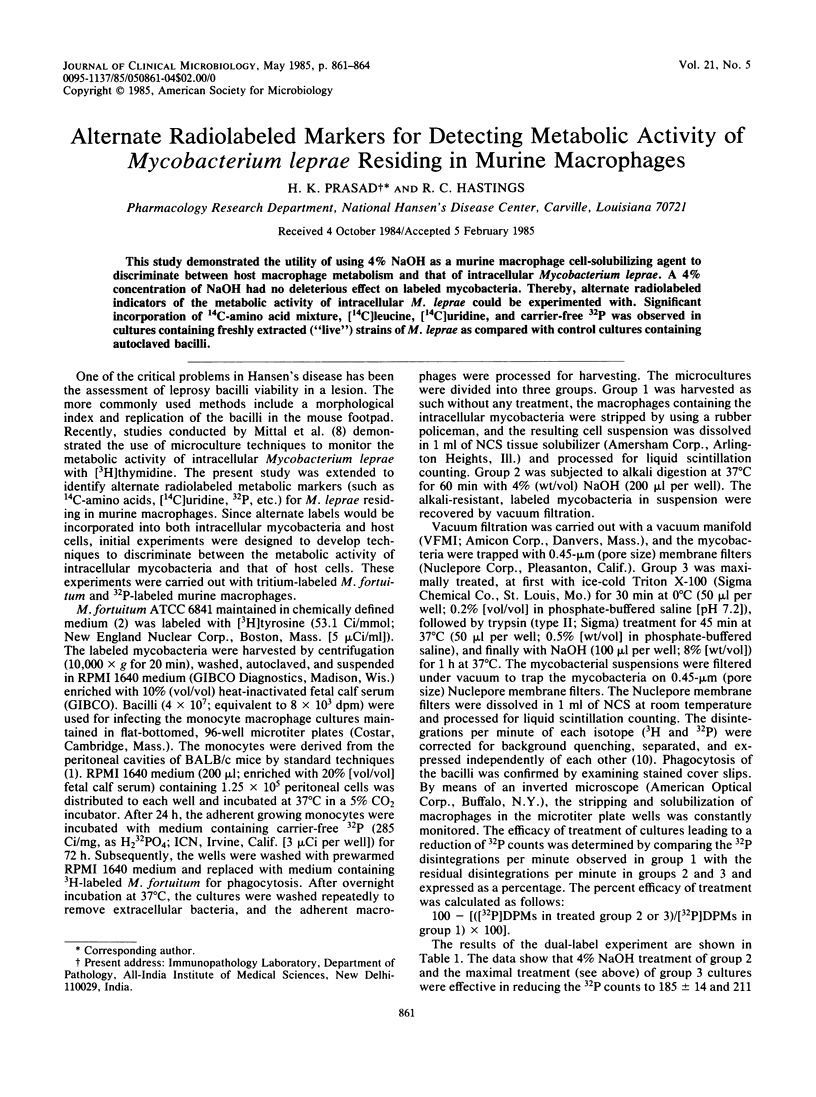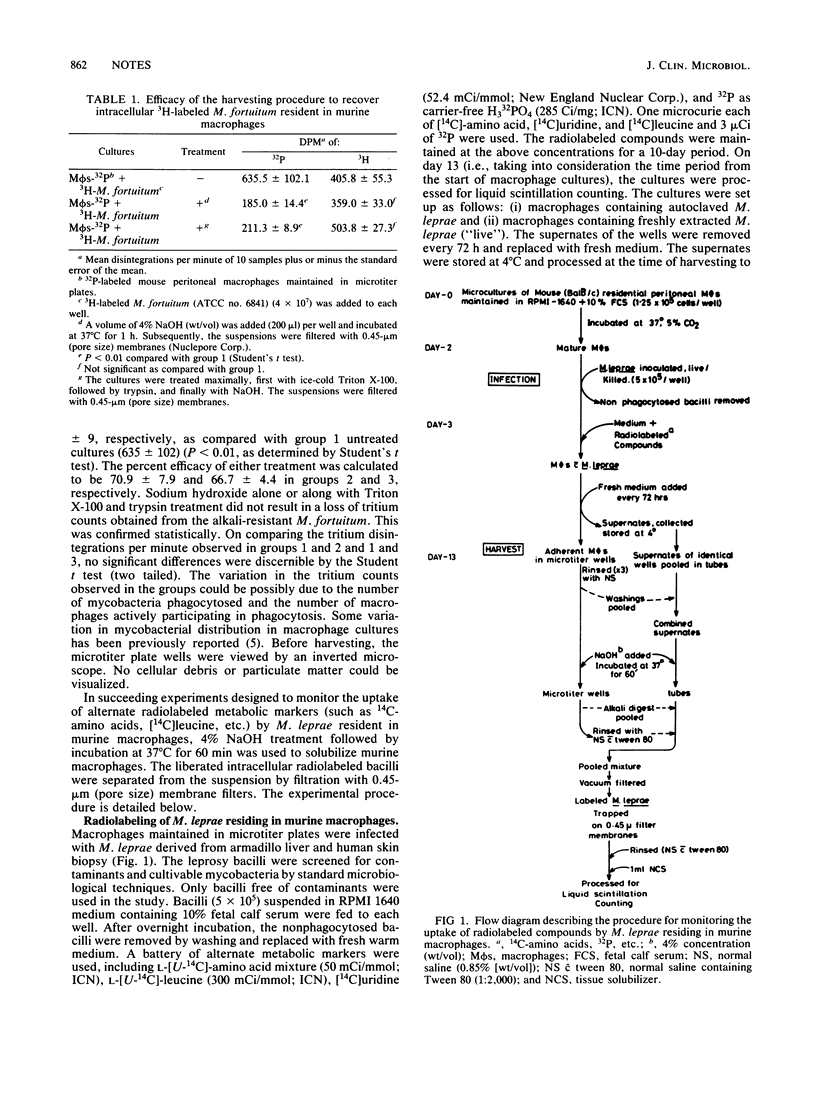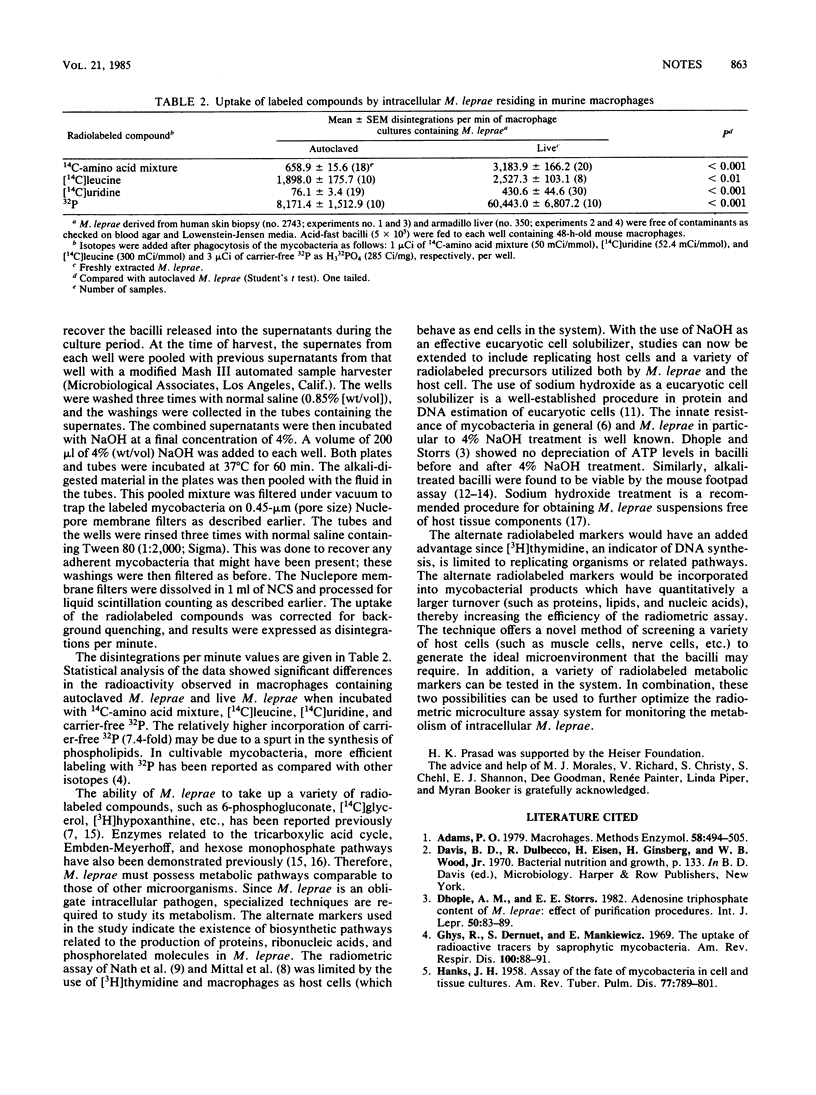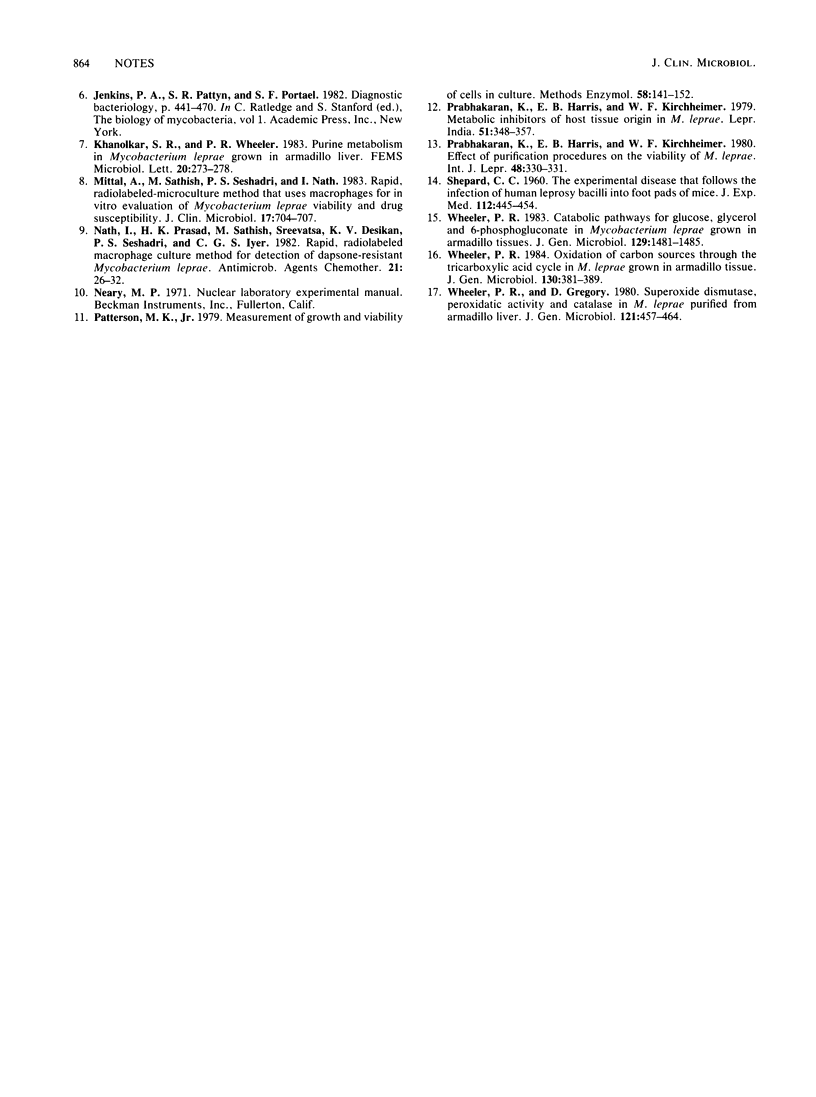Abstract
This study demonstrated the utility of using 4% NaOH as a murine macrophage cell-solubilizing agent to discriminate between host macrophage metabolism and that of intracellular Mycobacterium leprae. A 4% concentration of NaOH had no deleterious effect on labeled mycobacteria. Thereby, alternate radiolabeled indicators of the metabolic activity of intracellular M. leprae could be experimented with. Significant incorporation of 14C-amino acid mixture, [14C]leucine, [14C]uridine, and carrier-free 32P was observed in cultures containing freshly extracted ("live") strains of M. leprae as compared with control cultures containing autoclaved bacilli.
Full text
PDF



Selected References
These references are in PubMed. This may not be the complete list of references from this article.
- Adams D. O. Macrophages. Methods Enzymol. 1979;58:494–505. doi: 10.1016/s0076-6879(79)58164-6. [DOI] [PubMed] [Google Scholar]
- Dernuet S., Mankiewicz E. The uptake of radioactive tracers by saprophytic mycobacteria. Am Rev Respir Dis. 1969 Jul;100(1):88–91. doi: 10.1164/arrd.1969.100.1.88. [DOI] [PubMed] [Google Scholar]
- Dhople A. M., Storrs E. E. Adenosine triphosphate content of Mycobacterium leprae: effect of purification procedures. Int J Lepr Other Mycobact Dis. 1982 Mar;50(1):83–89. [PubMed] [Google Scholar]
- HANKS J. H. Assay of the fate of Mycobacteria in cell and tissues cultures. Am Rev Tuberc. 1958 May;77(5):789–801. doi: 10.1164/artpd.1958.77.5.789. [DOI] [PubMed] [Google Scholar]
- Mittal A., Sathish M., Seshadri P. S., Nath I. Rapid, radiolabeled-microculture method that uses macrophages for in vitro evaluation of Mycobacterium leprae viability and drug susceptibility. J Clin Microbiol. 1983 Apr;17(4):704–707. doi: 10.1128/jcm.17.4.704-707.1983. [DOI] [PMC free article] [PubMed] [Google Scholar]
- Nath I., Prasad H. K., Sathish M., Sreevatsa, Desikan K. V., Seshadri P. S., Iyer C. G. Rapid, radiolabeled macrophage culture method for detection of dapsone-resistant Mycobacterium leprae. Antimicrob Agents Chemother. 1982 Jan;21(1):26–32. doi: 10.1128/aac.21.1.26. [DOI] [PMC free article] [PubMed] [Google Scholar]
- Patterson M. K., Jr Measurement of growth and viability of cells in culture. Methods Enzymol. 1979;58:141–152. doi: 10.1016/s0076-6879(79)58132-4. [DOI] [PubMed] [Google Scholar]
- Prabhakaran K., Harris E. B., Kirchheimer W. F. Effect of purification procedures on the viability of Mycobacterium leprae. Int J Lepr Other Mycobact Dis. 1980 Sep;48(3):330–331. [PubMed] [Google Scholar]
- Prabhakaran K., Harris E. B., Kirchheimer W. F. Metabolic inhibitors of host-tissue origin in Mycobacterium leprae. Lepr India. 1979 Jul;51(3):348–357. [PubMed] [Google Scholar]
- Wheeler P. R. Catabolic pathways for glucose, glycerol and 6-phosphogluconate in Mycobacterium leprae grown in armadillo tissues. J Gen Microbiol. 1983 May;129(5):1481–1495. doi: 10.1099/00221287-129-5-1481. [DOI] [PubMed] [Google Scholar]
- Wheeler P. R., Gregory D. Superoxide dismutase, peroxidatic activity and catalase in Mycobacterium leprae purified from armadillo liver. J Gen Microbiol. 1980 Dec;121(2):457–464. doi: 10.1099/00221287-121-2-457. [DOI] [PubMed] [Google Scholar]
- Wheeler P. R. Oxidation of carbon sources through the tricarboxylic acid cycle in Mycobacterium leprae grown in armadillo liver. J Gen Microbiol. 1984 Feb;130(2):381–389. doi: 10.1099/00221287-130-2-381. [DOI] [PubMed] [Google Scholar]


